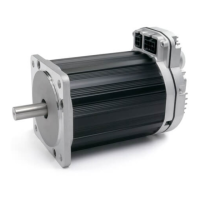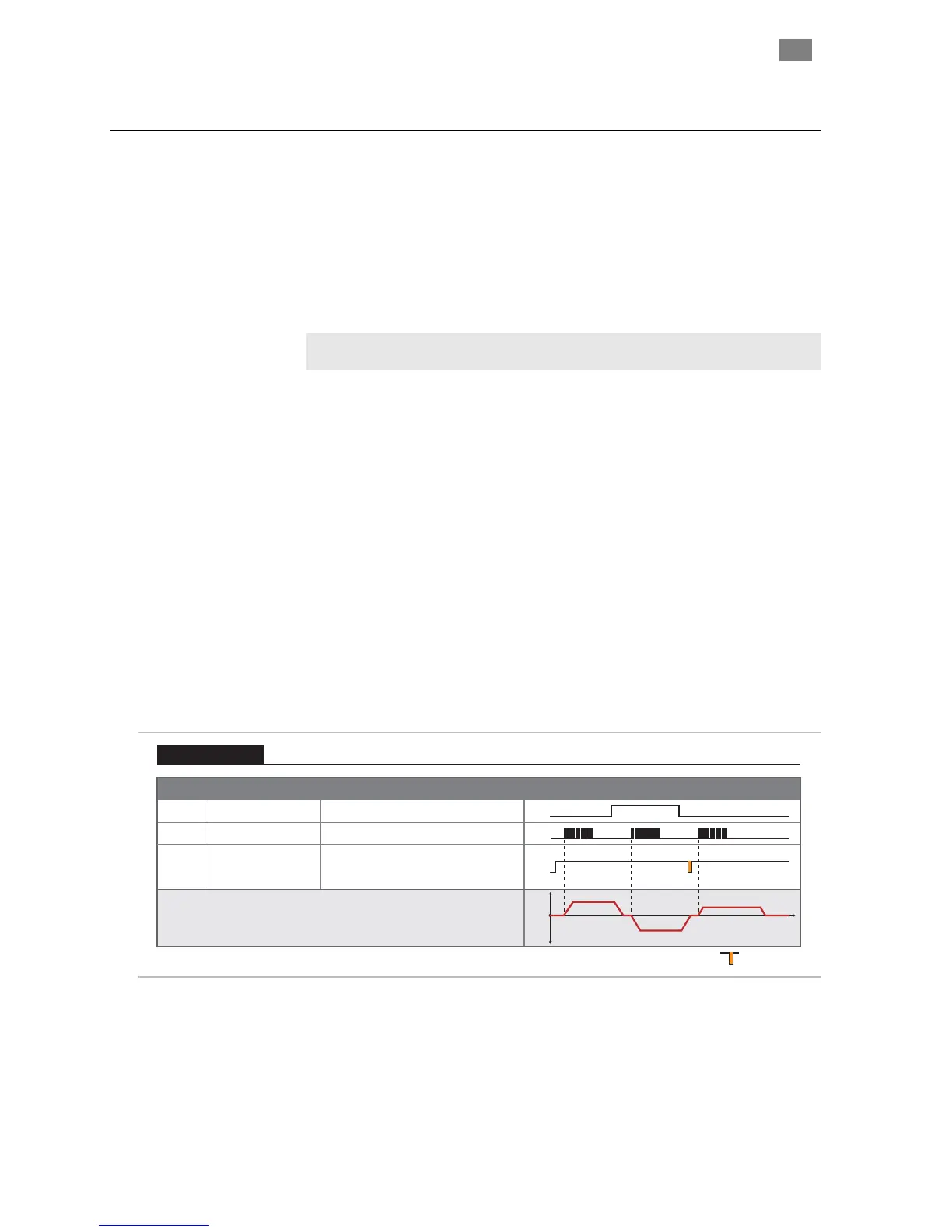C
LEAR
P
ATH
U
SER
M
ANUAL
R
EV
.
1.97
82
P
ULSE
B
URST
P
OSITIONING
M
ODE
S
UMMARY
Cl ce proportional to the number of pulses sent
to Input B. This mode offers much of the flexibility of a “step-and-
sm hat function is handled by ClearPath’s internal
trajectory generator). This mode is limited to two speeds and one
acceleration/deceleration rate of the user’s choice.
earPath will move a distan
direction” system, without the need for an expensive indexer to create
ooth move trajectories (t
Note: A fairly simple PLC counter or a software loop can be used to
generate pulses for use with this mode.
H
OW IT
W
ORKS
Assert the Enable Input to energize the motor. (Note: ClearPath can be
configured to perform a homing routine upon enable.) To execute
positioning moves, send a high speed stream of pulses to Input B, where
each pulse represents a small, incremental unit of distance. Total move
distance is determined by total number of pulses sent to Input B.
ll moves are executed at the user-defined acceleration and speed setting.
Direction of motor s Input A. See inputs and
timing diagra
A
haft rotation is controlled by
w. m belo
Trigger function: Alternate Speed
Briefly pulse the Enable input low, and the next pulse burst sent to
ClearPath will result in a move at the alternate speed setting. Once that
move is complete, ClearPath automatically returns to its default speed
setting.
Signal Function Input Type
Input A
Motor velocity vs. time
Input B
Enable
Direction Select
Pulse Input
Enable
Speed Select Pulse low to select alternate speedTrigger
Logic: High=CW Low=CCW
Pulse: High-Speed Pulse Burst
Logic: High=Enable Low=Disable
0
1
0
1
t
v
Example Timing
Notes: Maximum pulse input frequency = 500 kHz.
Minimum pulse on/off time = 1uS.
0
1
Trigger pulse
Pulse Burst Positioning
Pulse Positioning
alternate speed
Pulse Burst Positioning Mode: Inputs and Timing Diagram
Notes:
• The frequency of the pulse train applied to Input B must always
be higher than the specified speed limit(s). This ensures that the
motor is never “consuming” pulses faster than they are being
T
EKNIC
,
I
NC
.
F
AX
(585)784-7460
V
OICE
(585)784-7454

